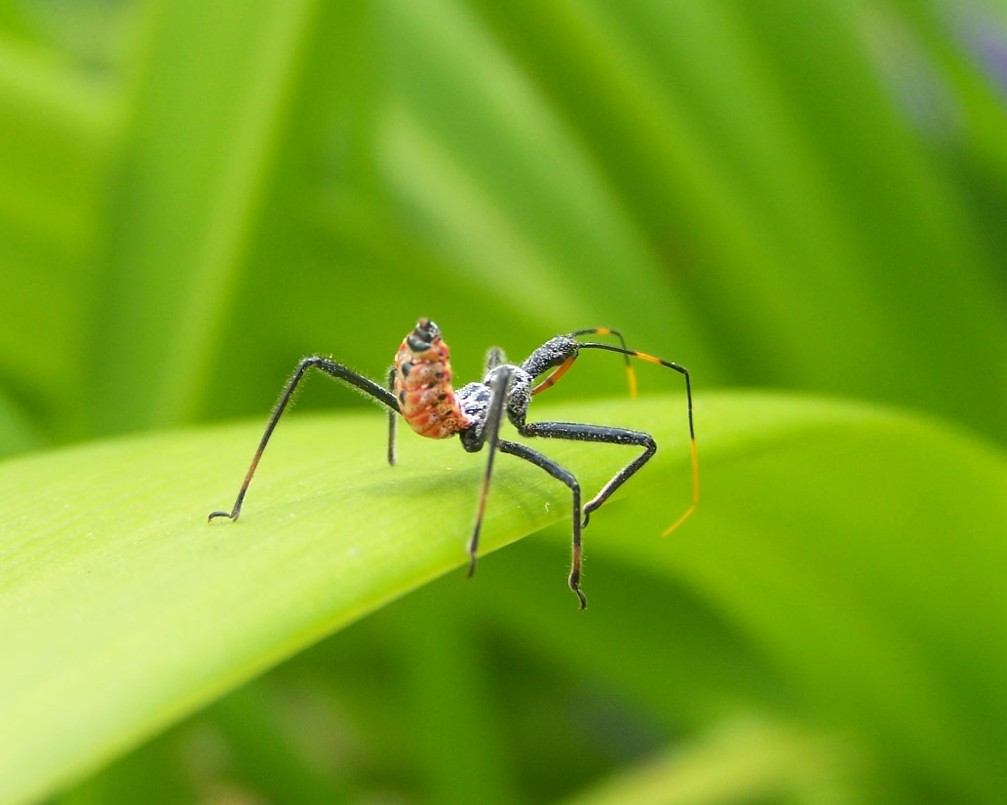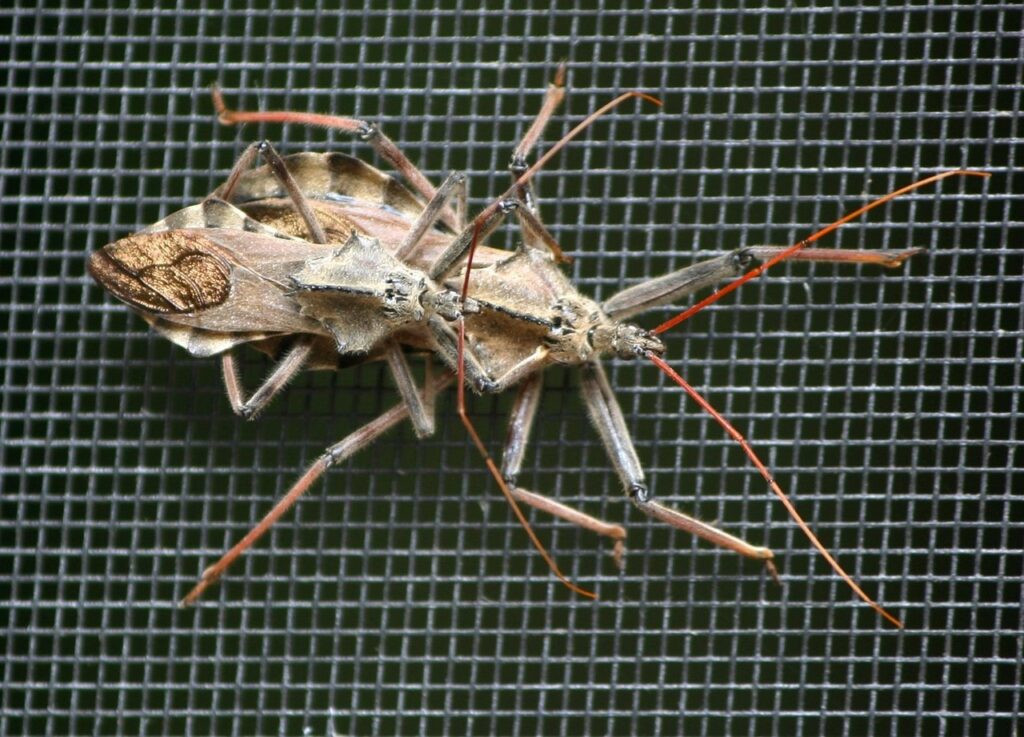Picture this: you’re enjoying a peaceful evening in your garden when suddenly, a tiny predator strikes with lightning speed, delivering a fatal blow to its unsuspecting prey. This isn’t the plot of a horror movie—it’s the daily reality of assassin bugs, nature’s most efficient and ruthless insect hunters. These remarkable creatures have mastered the art of stealth killing to such a degree that they’ve earned their intimidating name through sheer evolutionary brilliance.
The Silent Assassins Among Us
Assassin bugs belong to the family Reduviidae, comprising over 7,000 species worldwide that have perfected the art of predatory hunting. These insects didn’t earn their fearsome reputation by accident—they’re equipped with specialized hunting tools that would make any secret agent jealous. Their elongated rostrum, or beak, functions like a hypodermic needle, capable of piercing through the toughest insect armor.
What makes these bugs truly terrifying is their patient hunting strategy. Unlike other predators that rely on speed or brute force, assassin bugs are masters of ambush tactics. They can remain motionless for hours, waiting for the perfect moment to strike their unsuspecting victims.
Anatomy of a Perfect Killer

The physical design of assassin bugs reads like a blueprint for the ultimate predator. Their bodies are typically elongated and flattened, allowing them to slip into narrow crevices where prey might hide. The head is small and narrow, housing compound eyes that provide excellent vision for tracking movement.
Their most distinctive feature is the curved rostrum that folds beneath their head when not in use. This proboscis contains two channels—one for injecting digestive enzymes and another for sucking up the liquefied remains of their prey. The front legs of many species are modified into powerful raptorial appendages, perfect for grasping and holding struggling victims.
Some species have developed even more specialized features, such as sticky pads on their legs for better grip or spines that help them secure their catch. These adaptations have evolved over millions of years, creating killing machines that are perfectly suited to their predatory lifestyle.
The Deadly Kiss of Death

When an assassin bug strikes, it delivers what scientists call the “kiss of death”—a bite that injects powerful enzymes into the victim’s body. These enzymes don’t just kill; they begin breaking down the prey’s internal tissues from the inside out. The process is remarkably efficient, turning the victim’s insides into a protein-rich soup that the assassin bug can easily consume.
The speed of this process varies depending on the size of the prey and the species of assassin bug. Smaller insects might be liquefied within minutes, while larger prey can take several hours to be completely processed. This external digestion allows assassin bugs to consume prey much larger than themselves, making them incredibly effective predators.
Masters of Disguise and Deception

Many assassin bug species have evolved remarkable camouflage abilities that put chameleons to shame. Some species cover themselves with dust, debris, or even the empty shells of their previous victims to blend seamlessly with their environment. The masked hunter, for instance, coats itself with dust and lint, making it nearly invisible against household surfaces.
Others have developed body shapes and colors that mimic harmless insects or even plant parts. Some tropical species perfectly imitate flower petals, lying in wait for unsuspecting pollinators. This level of deception demonstrates the sophisticated evolutionary strategies these insects have developed to maximize their hunting success.
Hunting Strategies That Defy Belief

Different assassin bug species employ various hunting strategies, each more ingenious than the last. Some are active hunters that patrol their territory, while others are ambush predators that wait patiently for prey to come within striking distance. The thread-legged bugs hang from spider webs, plucking the silk strands to mimic trapped prey and lure the spider within reach.
Perhaps most remarkable are the species that have learned to hunt in packs. These social assassin bugs coordinate their attacks, with some individuals driving prey toward others positioned for the killing blow. This cooperative hunting behavior is relatively rare among insects and showcases the complex social behaviors these creatures can develop.
The Vampire Bugs That Haunt Our Dreams

Among the most notorious assassin bugs are the kissing bugs, which have earned infamy for their blood-sucking habits and their role in transmitting Chagas disease. These nocturnal hunters are attracted to the carbon dioxide we exhale and the warmth of our bodies, making them formidable parasites of mammals, including humans.
Unlike their insect-hunting cousins, kissing bugs feed exclusively on blood, using their piercing mouthparts to access blood vessels. Their saliva contains anticoagulants that keep blood flowing during feeding, but it can also contain parasites that cause serious health problems. The fact that they often bite around the face and lips while people sleep adds to their sinister reputation.
These bugs demonstrate how the assassin bug family has diversified into various ecological niches, with some species becoming specialized parasites rather than predators of other insects.
Beneficial Assassins in Your Garden

Despite their fearsome reputation, most assassin bugs are actually beneficial insects that provide natural pest control in gardens and agricultural settings. They prey on many insects that we consider pests, including aphids, caterpillars, beetles, and flies. A single assassin bug can consume dozens of harmful insects during its lifetime, making them valuable allies in organic gardening.
Gardeners who understand the value of these predators often create habitats to attract them, such as leaving areas of wild vegetation or avoiding broad-spectrum pesticides that might harm beneficial insects. The presence of assassin bugs in a garden is often a sign of a healthy ecosystem with balanced predator-prey relationships.
Incredible Speed and Precision

The attack speed of assassin bugs is truly breathtaking to witness. High-speed photography has revealed that some species can strike and penetrate their prey in less than a millisecond. This lightning-fast attack gives prey virtually no chance to escape once the assassin bug has decided to strike.
The precision of their attacks is equally impressive. Assassin bugs can target specific body parts of their prey, often aiming for joints or soft spots in the exoskeleton where their rostrum can easily penetrate. This surgical precision ensures that their initial strike is almost always fatal, preventing prey from fighting back or escaping.
Survival Tactics of the Hunted

The constant threat posed by assassin bugs has led to fascinating evolutionary arms races with their prey species. Some insects have developed thicker exoskeletons or chemical defenses to protect themselves from assassin bug attacks. Others have evolved behavioral adaptations, such as increased vigilance or the ability to detect the chemical signatures of hunting assassin bugs.
Interestingly, some prey species have learned to recognize the hunting patterns of local assassin bug populations and modify their behavior accordingly. This ongoing evolutionary dance between predator and prey continues to drive the diversification of both assassin bugs and their potential victims.
The Sound of Silent Death

Many assassin bug species can produce sounds through stridulation—rubbing body parts together to create vibrations. These sounds serve various purposes, from attracting mates to warning potential threats. Some species produce ultrasonic calls that are beyond human hearing range, allowing them to communicate without alerting their prey.
The ability to produce and detect these sounds adds another layer of sophistication to their hunting arsenal. Some assassin bugs can even detect the sounds made by their prey, using acoustic cues to locate hidden victims or identify the species they’re stalking.
Mating Rituals of Deadly Romance

The mating behavior of assassin bugs is as fascinating as their hunting strategies. Males often perform elaborate courtship displays, using visual signals, pheromones, and even vibrational songs to attract females. However, courtship can be dangerous business when both partners are equipped with deadly weapons.
Some species have evolved specific mating rituals that prevent accidental injury during courtship. Males may approach females with special gestures that signal their peaceful intentions, or they might present nuptial gifts to distract the female during mating. These behaviors highlight the complex social interactions that can evolve even among solitary predators.
Global Distribution and Habitat Mastery
Assassin bugs have conquered virtually every habitat on Earth, from tropical rainforests to arid deserts and from freshwater environments to urban landscapes. This incredible adaptability has allowed them to colonize diverse ecosystems and exploit a wide range of prey species. Some species are highly specialized for specific habitats, while others are generalists that can thrive in multiple environments.
Their global success is partly due to their efficient predatory lifestyle, which allows them to survive in environments where other insects might struggle to find adequate food sources. The ability to consume prey larger than themselves gives assassin bugs a significant advantage in resource-limited environments.
Conservation and Ecological Importance

As apex predators in the insect world, assassin bugs play crucial roles in maintaining ecological balance. They help control populations of herbivorous insects, preventing any single species from becoming too dominant. This regulation service is essential for maintaining biodiversity and ecosystem stability.
Climate change and habitat destruction pose threats to many assassin bug species, particularly those with specialized habitat requirements. Conservation efforts that protect diverse ecosystems ultimately benefit these important predators and the ecological services they provide. Understanding and appreciating assassin bugs is crucial for maintaining healthy ecosystems worldwide.
Future Research and Discoveries

Scientists continue to discover new species of assassin bugs and uncover fascinating aspects of their biology. Recent research has revealed sophisticated hunting strategies, complex social behaviors, and remarkable adaptations that were previously unknown. Advances in technology, such as high-speed cameras and molecular analysis, are providing new insights into these remarkable insects.
The study of assassin bugs also has practical applications, from developing new pest control strategies to understanding evolutionary processes. As we continue to explore the natural world, assassin bugs remain among the most compelling subjects for research, offering endless opportunities for discovery and wonder.
The next time you encounter one of these remarkable creatures, take a moment to appreciate the millions of years of evolution that have created such a perfect predator. These stealth killers remind us that nature’s most effective hunters often come in the smallest packages, proving that size isn’t everything when it comes to being a successful predator. What other secrets might these fascinating insects still be hiding in the shadows of our world?

